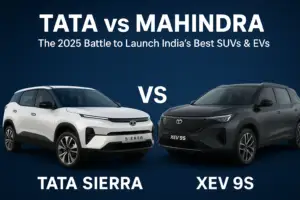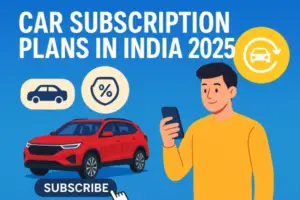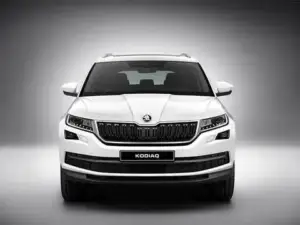Overview of the Indian Automotive Market
The Indian automotive market has witnessed remarkable growth in recent years, establishing itself as one of the largest automobile markets globally. As of 2023, the market is characterized by a diverse array of vehicle segments ranging from passenger cars to two-wheelers, catering to the demands of a vast consumer base. The shift in consumer preferences towards more fuel-efficient and environmentally friendly options has significantly influenced market dynamics. This evolution is driven by an increasing awareness of environmental issues and government initiatives promoting sustainability.
Moreover, the introduction of electric vehicles (EVs) has begun to reshape the landscape of the automotive industry in India. With the government’s support through incentives and subsidies, the adoption of EVs is gaining momentum, positioning them as a key focus area for manufacturers. Major automotive players are investing in research and development to enhance their EV offerings, aiming to attract consumers who are increasingly inclined to consider greener alternatives. This shift not only aligns with global sustainability goals but also addresses the growing concerns over pollution and its adverse effects on public health.
In addition to the rise of electric mobility, trends such as digitalization, automation, and connected technologies are characterizing the automotive sector. Manufacturers are now prioritizing advanced features like artificial intelligence in vehicle operation and superior infotainment systems to cater to tech-savvy consumers. This is indicative of a broader trend where consumer expectations are evolving with advancements in technology, leading to a more interconnected driving experience.
Looking ahead, growth forecasts for the Indian automotive market remain optimistic, particularly with the expected vehicle launches in 2024-25. The combination of increasing urbanization, a growing middle class, and favorable economic conditions is likely to stimulate demand for new cars. This positions the Indian automotive market as not only a competitive space for car manufacturers but also a hub for innovation in vehicle technology and sustainable transportation solutions.
Key Players and Their Upcoming Models
The Indian automotive landscape is poised for an exciting transformation in the years 2024-25, with several major players preparing to launch innovative models that cater to the evolving preferences of consumers. Leading the pack is Maruti Suzuki, renowned for its broad spectrum of vehicles. Among its future offerings are the highly anticipated new-generation Alto and Vitara, both expected to come equipped with enhanced safety features and improved fuel efficiency, targeting the budget-conscious segment. These models are likely to debut in mid-2024, with competitive pricing that aligns with Maruti’s reputation for affordable vehicles.
Hyundai, another major competitor, is set to unleash the next iteration of its popular Creta and the electrifying Ioniq 5. The new Creta will feature a more aggressive design and upgraded technology, promising a blend of comfort and performance. On the other hand, the Ioniq 5 is anticipated to elevate the electric vehicle segment in India, providing consumers with an eco-friendly option without compromising on luxury and performance. Both models are expected to hit the market by late 2024.
Tata Motors is also making strides with its upcoming Nexon EV facelift and an all-new flagship SUV. The Nexon EV aims to enhance its appeal with a longer range and cutting-edge technology, reflecting Tata’s commitment to sustainable mobility. The flagship SUV will position Tata to compete directly with other premium brands in the growing SUV market in India. Their expected launch is aligned with early 2025.
Kia will enhance its portfolio with the new Sportage, promising a blend of advanced technology and spacious interiors designed for the modern family. The specifications hint at a strong hybrid variant in addition to the petrol and diesel options, catering to a diverse customer base. Expect its arrival around mid-2025.
International players like Toyota and Volkswagen are also ramping up their operations, with models like the Toyota Innova Hycross and Volkswagen Taigun expected to refine the MPV and compact SUV segments respectively. Both manufacturers are eyeing a late 2024 release to capitalize on the festive season demand.
Focus on Electric Vehicles and Sustainability
As India gears up for the automotive landscape of 2024-25, a significant shift towards electric vehicles (EVs) is taking center stage. This transition aligns with a broader commitment to sustainability and eco-friendly technology, reflecting a response to environmental challenges and the need for cleaner transport solutions. Numerous automotive manufacturers are unveiling plans for new electric models, ranging from established brands to innovative entrants from startups.
Prominent automotive giants are set to launch a variety of electric vehicles, significantly increasing the options available to consumers. Brands such as Tata Motors and Mahindra & Mahindra are expanding their EV lineups, while global players like Toyota and Hyundai are also introducing advanced electric models tailored to the Indian market. These vehicles are engineered to deliver impressive performance, enhanced range, and superior charging solutions, making them appealing to a diverse consumer base.
In addition to the traditional players, several startups are shaping the EV market by introducing unique and affordable models that cater to different segments. Companies like Ola Electric and Ather Energy are not only focusing on two-wheelers but also exploring four-wheeler segments, emphasizing smart technology and user-friendly features. This amalgamation of established and new players is fostering innovation and competition, promising a comprehensive ecosystem for electric mobility.
Furthermore, the Indian government plays a pivotal role in promoting EV adoption through various policies and incentives. Initiatives like the Faster Adoption and Manufacturing of Electric Vehicles (FAME) scheme aim to boost the infrastructure for EVs, providing subsidies and tax breaks that enhance affordability. Coupled with advancements in charging infrastructure, these policies are creating a conducive environment for consumers to transition to electric mobility.
The focus on electric vehicles not only contributes to sustainability but also has a positive impact on the economy. By reducing reliance on fossil fuels, India can mitigate pollution and promote energy independence, ensuring a healthier environment for future generations. As the automotive sector embraces this transformation, it is vital for all stakeholders to collaborate effectively to capitalize on the opportunities presented by electric mobility.
What to Expect in Terms of Features and Technology
As we look ahead to the automobile landscape of 2024-25 in India, the integration of advanced technology and innovative features is poised to redefine driving experiences. The upcoming cars are expected to showcase significant improvements in connectivity, safety, and fuel efficiency, making them more appealing to tech-savvy consumers.
One of the primary advancements anticipated is the enhancement of connectivity features. Many new models are likely to include sophisticated infotainment systems that allow seamless smartphone integration, enabling drivers to access navigation, media, and communication applications with ease. This integration will likely be complemented by voice recognition technology, providing a hands-free experience while ensuring safer driving. Furthermore, the inclusion of over-the-air updates for software will ensure that users remain current with the latest features and improvements, consequently enhancing the overall user experience.
Safety features are another focal point in the development of upcoming vehicles. The introduction of autonomous driving functions, such as adaptive cruise control and lane-keeping assistance, is expected to significantly bolster road safety. Additionally, many manufacturers are likely to enhance structural integrity with advanced materials that provide better crash protection. These improvements, alongside collision detection systems and automated emergency braking, will undoubtedly make vehicles safer for both drivers and passengers alike.
Moreover, fuel efficiency is set to take center stage as manufacturers aim to meet stringent environmental regulations and consumer demands for sustainable options. Upcoming cars are anticipated to adopt more efficient engines and alternative fuel technologies, including hybrid and electric options, that significantly reduce emissions. The emphasis on fuel economy not only caters to eco-conscious buyers but also promises long-term savings on operating costs.
In conclusion, the expected advancements in connectivity, safety, and fuel efficiency indicate a transformative year ahead for the automotive industry in India. Consumers are likely to benefit from cutting-edge technology that enhances their driving experience while promoting safety and sustainability.






































